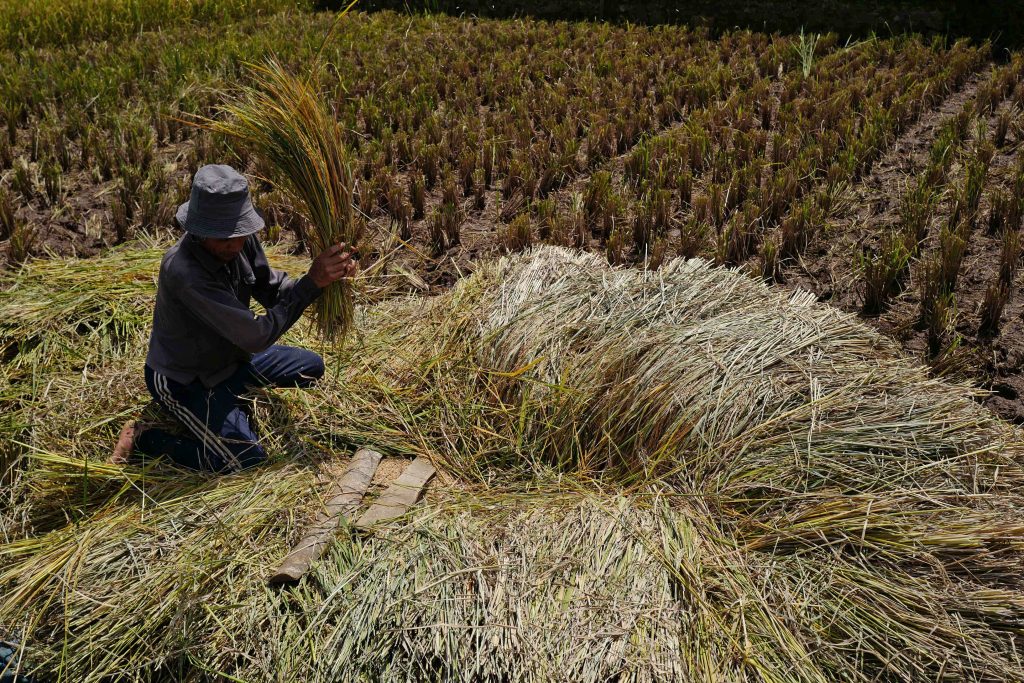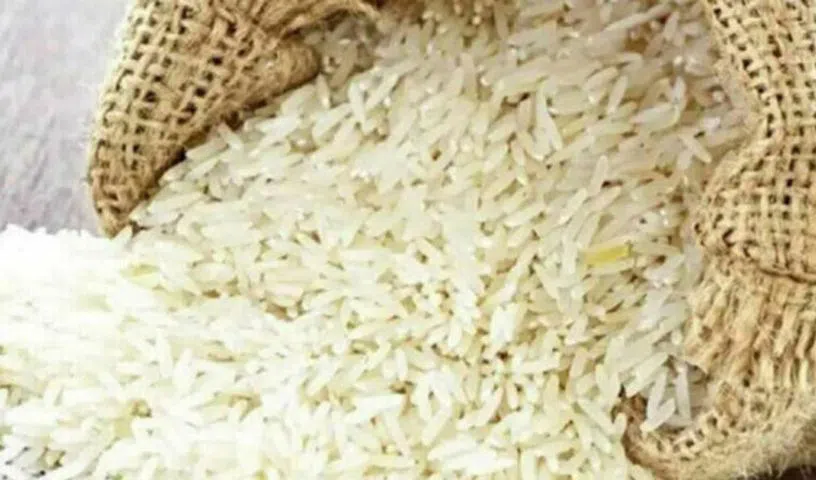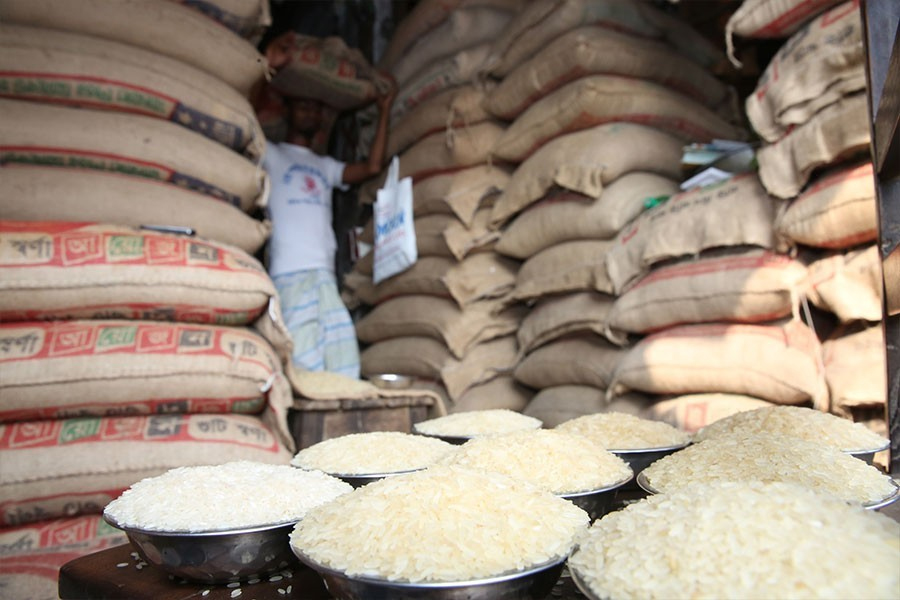Tags
Cambodian rice benefits from global security woes

A worker unloads paddy rice at a mill in Battambang province on September 11. MAFF
Cambodia once set a goal to export up to one million tonnes of milled rice by 2015, but today, nearly ten years later, the goal has yet to be reached.
In 2022, milled rice export amounted to 640,000 tonnes, which was only a slight increase from the total in 2021.
In the previous election mandate (2018 to 2023), the government called milled rice “white gold” and had a high ambition to become the “largest milled rice exporter in the world” among its competitors in the region.
Having become a country with rice surplus in 2022, thanks to a harvest of 6.3 million tonnes, the Kingdom decided to address the rising yield by expanding export markets.
Former Prime Minister Hun Sen had called on his counterparts during bilateral and multilateral meetings to buy Cambodian’s milled rice, while encouraging investors to invest in the rice sector, including purchasing from farmers and processing the product.
A range of ministries – Commerce, and Agriculture – which have jurisdiction over the rice sector considered expanding international markets, by working with the private sector, such as the Cambodia Rice Federation (CRF), as their representative overseas.
“Cambodia’s milled rice markets are growing now, which is better than in the past. I said it is better because we had to look for international markets in the past. The government had always requested their counterparts to buy our milled rice.
“But now, things have changed. Although we continue looking for more markets, we have seen a positive trend. Friends of Cambodia have requested to buy from us,” said Ministry of Commerce spokesman Pen Sovicheat.
Although deals by foreign countries, which requested to buy milled rice from Cambodia in the past, such as the Philippines and Indonesia, did not formalise previously, the two countries have made an official proposal to buy Cambodia’s milled rice due to food security measures.
“We feel proud that they are requesting to buy our milled rice. What we have to do now is to continue upgrading our rice quality and raise the export quantity to meet the demand as stated in those agreements,” Sovicheat said.
Clear, strong goal
Meanwhile, Ministry of Agriculture, Forestry and Fisheries spokeswoman Im Rachna said Cambodia has the capacity to produce rice to meet international demand, not only for local consumption.
The reason for this positive growth is because Cambodia has been improving its rice sector through research and introducing new rice varieties which are resilient to climate change.
“We have some new varieties such as Champei Sar 70 (CPS 70) which require a short period of growing – between 79 and 83 days. This helps our farmers grow rice three or four times a year, provided that their location has adequate water supply,” Rachna said.
Asked about the failure to meet the one million tonne rice target, Sovicheat countered that “it is not a failure”, stressing that goal was part of the government’s motivation goal to push the sector to unlock Cambodia’s rice potential.
“We must set a high goal and have a long-term view to jump very high, even if we don’t reach it [immediately]. We must have a clear and strong goal to drive us through the obstacles to reach it,” he said.
CRF president Chan Sokheang said Cambodia’s rice is popular in many markets in the region, which is the result of concerted efforts by the government and private sectors, as well as the participation by Cambodians to promote its quality.
“This is a good and positive development for our milled rice as well as the agriculture sector as a whole. Government leaders have always promoted and advocated the quality of Cambodian rice,” he said.
Sokheang shared that there are other markets for Cambodia’s milled rice, such as Hong Kong, Sri Lanka, Timor-Leste and Brunei, which are in talks with Cambodia to import rice for local consumption.
Local food security
Hun Lak, Tropicam Fruit and Vegetable Co Ltd CEO, said climate change and the ongoing Russia and Ukraine war has created food security issues in some regions.
When Ukraine could not export their grains following Russia’s withdrawal of its grain agreement with the former, many countries which depended on wheat switched to rice, including that from Cambodia.
India’s latest export ban on rice also supported growth in rice exports by other countries.
Lak added that although export demand grows, there needs to be some consideration over the amount of rice exported as Vietnam is buying rice to stockpile.
Cambodian rice for sale at a Phnom Penh market. Hong Menea
There is a new trend which has not happened in recent years, when the price of rice rise high, coming in around 1,200 riel to 1,300 riel.
Asked what he thought about the increasing demand from abroad, Lak said: “We can say it is just a temporary trend. We can see that most countries that want to buy rice from us are the countries that are affected by climate change or natural disasters, including the Philippines and Indonesia. They need rice to stockpile.”
In the meantime, Lak called for the improvement of the infrastructure serving the rice sector, such as ensuring that millers are ready to purchase rice from farmers.
He also asked that operating costs, like electricity tariffs, transportation and freight, be eased, so that the rice and export sectors can ensure competitiveness with other rice producing countries.
Last week, Indonesia said they planned to increase rice imports to 250,000 tonnes a year from Cambodia to preserve its food security.
Looking at this, Hong Vannak, an economics researcher at the Royal Academy of Cambodia, lauded the demand for Cambodia’s milled rice as a good opportunity.
But locally, the government must do a clear evaluation on the price structure to protect its own food security.
“We must think twice why many countries are purchasing rice from us. It’s an interesting trend, but it needs more research to see the reason for this. We should move beyond producing rice for use in one year, in order to prepare ourselves for any force majeure or disaster,” he said.
https://www.phnompenhpost.com/business/cambodian-rice-benefits-global-security-woesPublished Date: September 12, 2023







